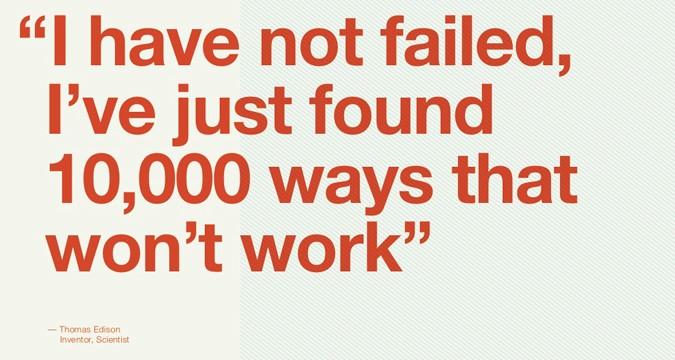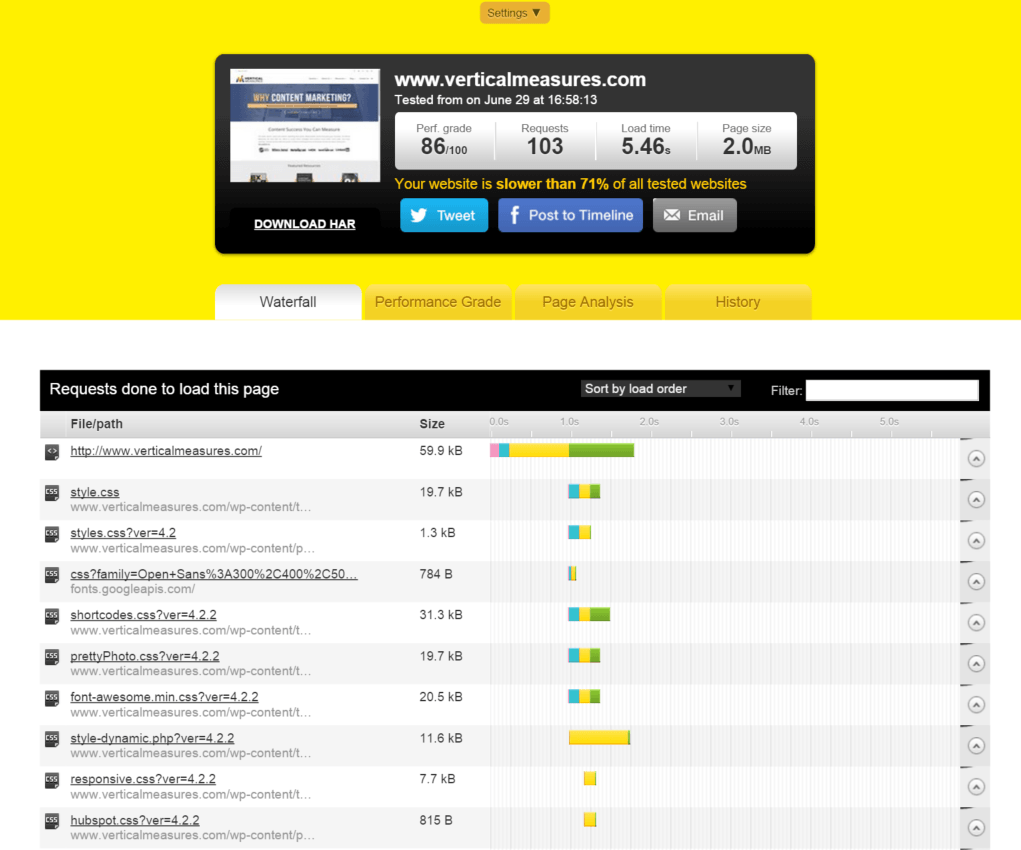In Part 2 of this series of posts on doing an online audit for SEO, we discussed the questions to ask yourself as you’re analyzing your website data. It’s our hope that those questions helped you tell an accurate story of your website performance in search and beyond. They’re a good place to start your journey regardless of your level of knowledge in SEO. But once you ask those questions, then what? How do you really improve and test in SEO?
The Internet holds so many answers to uncertain SEO questions. Even the savviest individuals still research the right solutions online to be 100% certain of up-to-date best practices. In SEO a good rule of thumb is: don’t be shy about taking your time and uncovering (or validating) the best solution.
Each SEO has their own take on what should be fixed first and in what order. It’s important to be confident in your decisions as you execute. Choose the best resources to garner information from, trust your gut, question everything but most importantly – know you’ll need to take chances and you may make mistakes.
This post should help guide you to the right answers for your specific site and offer a few best practice pointers to implementing your SEO fixes.
Expert Tip: Consider adding annotations in Google Analytics as you make improvements and changes to your site. Keeping a log with dates of implementation is also useful to reference in the future and tie back to specific improvements you see to the baselines you took in Step 2.
Backlink Analysis, Pruning & Reclamation
Websites with natural backlink profiles are more and more common today. A few years ago it was not quite the case; we saw a lot more manipulation. Penguin algorithm updates have brought the importance of maintaining a natural backlink profile to the forefront for SEOs, along with Google’s crusade to end spam tactics. The result? A massively cleaned up web – but the real work largely is just beginning. Frankly, backlink cleanup for some should be a regular activity. Sites large and small can earn links on a daily, sometimes hourly, basis.
Use the resources below to start cleaning up your backlink profile. The fruits of your labor may take weeks or even months to test out and become evident in the form of rankings and traffic. Stay diligent with your efforts and submit a disavow file for any links you were unsuccessful in having taken down. Then … hurry up and wait.
- Monitor the success rate of your link deletion campaign, # of links taken down.
- Check Google’s Search Console (formerly Webmaster Tools) for landing page and keyword impressions, clicks and CTR improvement.
- Review your keyword rankings for improvement and Google Analytics for traffic improvements.
- Use third party tools such as SEMRush, Open Site Explorer, and Majestic SEO to see the efforts of your clean up.
More resources:
Conduct a Backlink Profile Analysis with Excel (case study) via Moz
Avoiding the Penguin Slap: Best Practices for Backlink Analysis and Disavowing Links via Bright Edge
The Many Uses of Backlink Analysis via Search Engine Journal
Google Penguin Recovery Kit via Vertical Measures
How to Recover From Penguin 2.0 Using Only Free Tools via Hongkiat
A How-to Guide on Identifying Bad Links and Pruning Them Using Google’s Disavow Tool via Search Engine Journal
Keyword Research & Canonical Mapping
During a keyword analysis, in essence you’re looking for evidence of Google being confused. Whether it’s as a result of not understanding what a page should be ranking for, or targeting highly competitive terms that aren’t producing traffic, testing opportunities abound when it comes to keywords because most sites are confusing to search engines – unintentionally.
With the resources below you’re sure to learn all you need to know about keywords to get you ready to test. Act-On’s own Keyword Primer post is a great place to start.
Consider trying the following process to use what you’ve learned, and implement a small test.
- Examine keyword rankings for pages on your site which aren’t performing well. These could be pages with rankings teetering between page 1 and 2, keywords with sharp declines or those that are close to premiering on page 1.
- Take a thorough look at the landing pages for the keywords in question. Are on-page best practices followed? Is a canonical strategy in place? Is the keyword in the meta title, the meta description, in the copy, etc…? Make improvements to the page to further tell search engines the page should rank for that keyword – but don’t go overboard. Keep in mind what a reader would expect to find on the page.
- Consider testing additional best on-page practices for the landing page in question. Check the image alt tags and internal links. Consider building inbound links to the page. Document everything you implement so you’ll know exactly what contributed.
- Sit back and wait. Track rankings in your rankings tool and watch how your implementation performs.
More resources:
A Keyword Primer: Finding and Using Keywords Effectively via Act-On Software
Keyword Research: The Definitive Guide via Backlinko
SEO 101 Part 7: Mapping Keywords to Pages via Practical Ecommerce
Mapping Keywords to Content for Maximum Impact – Whiteboard Friday via Moz
Fight Keyword Cannibalization with a Canonical SEO Strategy via Vertical Measures
Rel=Confused? Answers to Your Rel=Canonical Questions via Moz
Rel=canonical What it is and how (not) to use it via Yoast
Internal Linking Strategy
A common issue uncovered during Onsite Technical Audits for SEO is a lack of internal links, and also internal links that aren’t aiding in usability. (There should be a good reason for an internal link, from the reader’s perspective.) Not only are links great for optimization, they’re also great for user experience – but they don’t aid in SEO when they aren’t being clicked.
Are your internal links optimized appropriately for the page they are linking to? Ideally great internal links, more often than not, should use natural anchor text that relates to keywords in the meta title of the page being linked to. Internal links can also have calls to action such as “Download now” or “Click here” and still be very effective.
Examine your analytics for internal links. Are they being clicked? Google Analytics allows you to view In-Page Analysis which illustrates where visitors have clicked on your pages. As you implement new internal links, test them to verify that the links actually serve a purpose and are user-friendly.
This screen shot shows which locations on Vertical Measures’ own home page get what percentage of the total clicks.
Resources:
Guide to Internal Links via Moz
The Seven Commandments of Internal Linking that Will Improve Content Marketing SEO via kissmetrics
The Hitchhiker’s Guide to Internal Linking Strategy via Search Engine Land
5 “Panda Proof” Internal Linking Strategies via Internet Marketing Ninjas
9 Pro Tips for Developing a Killer Internal Link Structure via Search Engine Watch
Duplicate Content Cleanup
The issue of duplicate content on your website was briefly discussed in our Step 2 analysis post, but deserves a bit more discussion because of the severity of the problem in SEO. Unintentional duplicate content abounds and is often left unattended, when the fix is sometimes a simple check of a box in your CMS.
Analyze your duplicate content issue and examine the best ways to test and fix the issues. Most commonly we find the WordPress CMS is a major culprit of duplicate content. Category pages and paginated pages should not be indexed, and therefore present problems if they are indexed – in the form of duplicate content. This is a simple fix in most content management systems, such as WordPress.
Other cases are more complicated, where your own affiliate marketers or resellers are causing duplicate content issues. Here you can require that if they replicate one of your pages, they must use a canonical link that points to your page in the metadata. Every little bit can help with duplicate content, do your due diligence and start testing programmatic solutions for your issues.
Resources:
Duplicate Content: 7 Ways to Get Rid of It via Woo Rank
Removing Duplicate Content via Moz
Webinar: How to Destroy ALL Your Duplicate Content via Vertical Measures
How to Avoid Google Thin Content Penalties via Site Pro News
What a Website Can Do about “Thin Content” – 4 Common Scenarios and Solutions via Bruce Clay
Addressing Thin Content via Search Engine Watch
Href Lang
Does your site attract an international audience, or do you plan to in the future? Then hreflang is an SEO element you should consider testing. The hreflang tag aids in dispelling the confusion for search engines when a site has content in multiple languages or for different international audiences.
Try testing out use of the hreflang tag on content which search engines may see as duplicate or inconsistent across all your web platforms. An analysis should include not just your primary web property but any others, microsites or otherwise, which contain the same or similar content in multiple languages. Test the tag and track the number of indexed pages, results in Google Search Console, and traffic from your international audience.
Resources:
Getting hreflang Right: Examples and Insights for International SEO via Moz
Webinar: hreflang Tag – How to Boost Your International Business via Vertical Measures
The hreflang Tags Generator Tool via International SEO Map
Implementing The hreflang Tag via Branded3
Robots.txt
If you’re like us, it’s probably not likely that you’re updating your Robots.txt file too regularly. When was the last time you analyzed yours or your client’s? If it’s been a while it’s probably time to check it out and test out some improvements.
Best practices haven’t changed much over the years for Robots.txt files, but more and more SEOs are tailoring their files based on the CMS platform for ease of indexation. Drupal, WordPress and Magento have specific Robots.txt file formats they recommend. Test out these formats and implement. Check your indexation and crawl stats using Google Search Console and third party tools to observe improvements over time.
More resources:
Robots.txt Tutorial via SEOBook
How to Optimize Your Robots.txt File via Quicksprout
How To Optimize WordPress Robots.txt File For Search Engine Bots via Shout Me Loud
Critical Mistakes in Your Robots.txt Will Break Your Rankings and You Won’t Even Know It via Cognitive SEO
Page Load Speed
A website’s speed is an increasingly important factor to consider. Search engines have been forthright with page load speed’s importance to ranking and recently, with the focus on mobility, have shown how its importance is only growing.
Analyzing your site’s page load speeds, implementing fixes and testing improvements can be done in a few steps. We recommend Pingdom’s website speed test and their waterfall report, which itemizes each of the elements on a page being downloading and contributing to page load speed. Sit down with your webmaster, development team, or programmers and start the conversation of testing improvements. What items are essential to the page functioning and which are optional, bogging down the speed? Incremental improvements can be made by acknowledging what is contributing and getting rid of unessential elements that don’t.
This Pingdom waterfall diagram shows how long it takes to load each element on one page.
Resources:
5 SEO Tips To Boost Page Speed via Search Engine Land
Speed Is A Killer – Why Decreasing Page Load Time Can Drastically Increase Conversions via kissmetrics
The Advanced Guide to SEO Chapter 2: Site Speed & Performance via Quick Sprout
Top 7 Reasons Why Your Content Pages Load Slowly via Vertical Measures
Page Speed: How It Impacts Your SEO and How to Improve It via Oncrawl
Additional Reading
Still yearning to learn more? SEO is never done and with these additional resources you’re sure to stay busy analyzing, implementing/testing and measuring results. Check out the articles listed below to dive even more deeply into items you can test.
Top 10 Technical SEO Issues (and How to Fix Them) via CIO
The 7 Most Common SEO Mistakes via Forbes
SEO Website Issues And How to Fix Them via Koozai
58 Resources to Help You Learn and Master SEO via kissmetrics
How to Perform an SEO Audit – Template Included via Quick Sprout
Technical SEO Audit Checklist: 2015 Edition via Moz
Technical SEO Audit Checklist Download via Geoff Kenyon
If you missed the first two posts in this series, here they are:
Read How to Perform an Onsite Audit for SEO: Part 1: Do the Research
Read How to Perform an Onsite Audit for SEO, Part 2: Do the Analysis
Want to focus in on how to optimize your content for SEO? Check out Act-On’s How to Make Any Content SEO-Friendly.




